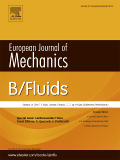
EUROPEAN JOURNAL OF MECHANICS B-FLUIDS
Scope & Guideline
Unveiling the Mysteries of Fluid Behavior
Introduction
Aims and Scopes
- Fluid Dynamics and Instabilities:
Research on the behavior of fluids under various conditions, including stability analyses, turbulence, and the dynamics of fluid flow in complex geometries. - Numerical Methods and Computational Fluid Dynamics (CFD):
Development and application of numerical techniques, such as Lattice Boltzmann methods, Finite Element Methods, and Computational Fluid Dynamics simulations to model fluid behavior. - Multiphase and Non-Newtonian Flows:
Studies involving complex fluid interactions, including multiphase systems, non-Newtonian fluids, and the effects of rheological properties on flow characteristics. - Thermal and Mass Transfer:
Investigations into heat and mass transfer phenomena in fluid systems, including convective heat transfer, thermal stability, and the impact of temperature gradients on fluid behavior. - Fluid-Structure Interaction:
Research focusing on the interactions between fluid flows and solid structures, particularly in applications such as biomedical engineering and aerospace. - Environmental Fluid Mechanics:
Studies addressing fluid dynamics in natural environments, such as rivers, oceans, and atmosphere, focusing on phenomena like waves, currents, and sediment transport.
Trending and Emerging
- Machine Learning and AI in Fluid Mechanics:
There is a growing trend towards the application of machine learning techniques and artificial intelligence in fluid dynamics, particularly in predictive modeling and data-driven approaches. - Complex Fluid Dynamics in Biological Systems:
Research focusing on the fluid dynamics of biological systems, including blood flow, droplet dynamics in microfluidics, and interactions in biological tissues, is increasingly prominent. - Multiscale and Multifunctional Fluid Systems:
Emerging studies are investigating multiscale fluid systems that integrate various physical phenomena, such as electrohydrodynamics and magnetohydrodynamics, to understand complex interactions. - Environmental and Sustainable Fluid Mechanics:
There is an increasing focus on the environmental implications of fluid mechanics, including studies on sediment transport, pollution dispersion, and renewable energy applications in fluid systems. - Advanced Computational Techniques:
The journal shows a notable trend towards advanced computational methods, including hybrid approaches that combine various numerical techniques for more accurate fluid simulations.
Declining or Waning
- Classical Fluid Dynamics:
There is a diminishing emphasis on purely theoretical studies within classical fluid dynamics, possibly due to the increased focus on computational methods and experimental validations. - Simple Newtonian Fluid Studies:
Research centered on basic Newtonian fluid behaviors appears to be waning, as the field evolves towards more complex fluid interactions and non-Newtonian analyses. - Hydrodynamic Stability in Ideal Conditions:
Research focusing on hydrodynamic stability in idealized, simplified conditions has decreased, as more complex real-world applications and phenomena gain prominence.
Similar Journals
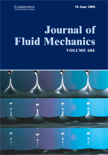
JOURNAL OF FLUID MECHANICS
Advancing the frontiers of fluid dynamics.JOURNAL OF FLUID MECHANICS, published by Cambridge University Press, is a premier international journal recognized for its significant contributions to the field of fluid dynamics. With an esteemed impact factor that places it in the Q1 category across multiple disciplines, including Applied Mathematics, Condensed Matter Physics, Mechanical Engineering, and Mechanics of Materials, this journal serves as a vital resource for researchers and practitioners alike. Established in 1956, it provides a platform for innovative and high-quality research articles that advance the understanding of fluid mechanics phenomena. The journal's rankings underscore its prestige, with Scopus recognizing it among the top journals in its category. Although it currently does not offer open access, the journal remains accessible to educational institutions and professionals in the United Kingdom and beyond. By addressing critical and emerging topics in fluid mechanics, JOURNAL OF FLUID MECHANICS is essential for those striving to push the boundaries of knowledge and application in this dynamic field.

EXPERIMENTS IN FLUIDS
Elevating knowledge in fluid mechanics with impactful research.EXPERIMENTS IN FLUIDS is a prestigious journal in the field of fluid mechanics, published by SPRINGER, renowned for its rigorous peer-reviewed research and experimental studies that advance the understanding of fluid behavior in various contexts. With an ISSN number of 0723-4864 and an E-ISSN of 1432-1114, this journal has published influential works since its inception in 1983, maintaining a convergence of data and insights crucial for both academia and industry. Its impressive impact factor and ranking in the Q1 category for Computational Mechanics, Fluid Flow and Transfer Processes, Mechanics of Materials, and Physics and Astronomy underscore its significance in fostering high-quality research in these domains. Researchers and professionals benefit from the comprehensive access to experimental methodologies, innovative applications, and cutting-edge results that the journal provides without the Open Access model. The journal's offices located in New York, USA, facilitate its global outreach, making it an essential resource for scholars and practitioners seeking to deepen their expertise in fluid dynamics and related fields.

Mechanika
Exploring New Dimensions in MechanicsMechanika is a prominent open-access journal published by Kaunas University of Technology in Lithuania, with an ISSN of 1392-1207 and E-ISSN 2029-6983. Since its transition to open access in 2007, the journal has successfully facilitated the dissemination of vital research findings within the field of condensed matter physics, carving a niche for itself in a competitive academic landscape. Despite currently being categorized in the Q4 quartile for its impact in this area, Mechanika aims to foster advancements by providing a platform for innovative studies, reviews, and applications. As researchers, professionals, and students engage with its content, they will find an array of studies that push the boundaries of understanding in mechanics and related disciplines. Situated in the vibrant academic milieu of Kaunas, Mechanika is committed to quality, accessibility, and fostering scientific dialogue among the global academic community.

ATOMIZATION AND SPRAYS
Unlocking the Secrets of Droplet DynamicsATOMIZATION AND SPRAYS, published by BEGELL HOUSE INC, stands at the forefront of research in the dynamic field of chemical engineering, particularly focusing on the intricate processes of atomization and the mechanics of droplet dynamics. Established in 1996, this prestigious journal aims to disseminate innovative findings and methodologies that drive advancements in applications ranging from spray technologies in industrial processes to environmental technology and energy conversion systems. With a current Impact Factor that reflects its significance within the community—ranked in the Q3 quartile—it serves as a comprehensive resource for researchers, professionals, and students eager to deepen their understanding of fluid mechanics and spray applications. Though not an open-access publication, it provides critical insights and a platform for scholarly communication and exchange in its converged years, fostering collaboration and innovation within the domain.
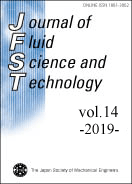
Journal of Fluid Science and Technology
Advancing the Frontiers of Fluid DynamicsThe Journal of Fluid Science and Technology, published by the Japan Society of Mechanical Engineers, serves as a pivotal platform for the dissemination of cutting-edge research in the fields of fluid mechanics and mechanical engineering. With an ISSN of 1880-5558, this Open Access journal has been dedicated to advancing the understanding of fluid flow and transfer processes since its establishment. As of 2023, it holds a significant position with a Q3 quartile ranking in both Fluid Flow and Transfer Processes and Mechanical Engineering categories. Researchers and practitioners are encouraged to explore the journal’s extensive collection of articles, contributing to the body of knowledge that impacts various practical applications in engineering and technology. The journal, which has established a reputation for quality amidst a competitive landscape, further fosters international collaboration and education by providing unrestricted access to its content. For professionals and students alike, the Journal of Fluid Science and Technology represents an invaluable resource for the latest findings and innovations in fluid dynamics and mechanical systems.
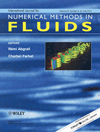
INTERNATIONAL JOURNAL FOR NUMERICAL METHODS IN FLUIDS
Exploring the Depths of Computational Fluid DynamicsINTERNATIONAL JOURNAL FOR NUMERICAL METHODS IN FLUIDS, published by Wiley, has established itself as a leading platform for cutting-edge research in the fields of applied mathematics, computational mechanics, computer science applications, and mechanical engineering. With its ISSN 0271-2091 and E-ISSN 1097-0363, this journal is committed to disseminating high-quality, peer-reviewed articles that contribute to the advancement of numerical methodologies in fluid dynamics. Boasting a commendable 2023 impact factor that places it in the second quartile across multiple relevant categories, it provides insights into significant research dimensions that engage an audience of researchers, professionals, and students keen on the computational challenges of fluid flow. The journal's broad scope encompasses foundational and applied research, encouraging the exploration of new numerical techniques and algorithms. As an invaluable resource based in the United Kingdom, INTERNATIONAL JOURNAL FOR NUMERICAL METHODS IN FLUIDS remains dedicated to providing insights and fostering innovation in its domain, with a consistent publication history spanning from 1981 to 2024.
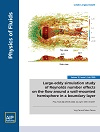
PHYSICS OF FLUIDS
Connecting Theory and Application in Fluid DynamicsPHYSICS OF FLUIDS is a premier journal published by AIP Publishing that serves as a vital resource for the fluid mechanics community. With an impressive impact factor and a consistent ranking in the Q1 quartile across multiple related disciplines—including Computational Mechanics, Condensed Matter Physics, Fluid Flow and Transfer Processes, Mechanical Engineering, and Mechanics of Materials—this journal is renowned for disseminating high-quality research in the dynamic field of fluid dynamics. Covering a wide range of topics, from fundamental fluid mechanics to advanced computational modeling, PHYSICS OF FLUIDS plays a crucial role in advancing understanding and fostering innovation in both academic and industrial applications. With its strong reputation and significant readership, this journal is essential for researchers, professionals, and students seeking to stay updated on the latest developments in fluid physics.
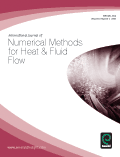
INTERNATIONAL JOURNAL OF NUMERICAL METHODS FOR HEAT & FLUID FLOW
Pioneering Innovative Numerical Techniques for Engineers.INTERNATIONAL JOURNAL OF NUMERICAL METHODS FOR HEAT & FLUID FLOW, published by EMERALD GROUP PUBLISHING LTD, is a premier platform dedicated to advancing the field of numerical methods applied to heat and fluid flow analysis. With an ISSN of 0961-5539 and an E-ISSN of 1758-6585, this journal has been a vital resource since its inception in 1991, covering cutting-edge research right up to 2024. It is highly regarded within various disciplines, as evidenced by its impressive ranking in the 2023 Scopus categories, which places it in the Q1 tier for Computational Mechanics and a Q2 tier for Aerospace Engineering and Mechanical Engineering. This authoritative journal holds significant importance for researchers, professionals, and students who are keen on expanding their knowledge and addressing challenges in thermal and fluid dynamics through innovative computational techniques. Although the journal does not provide Open Access options, its rigorous peer-review process and high-impact publication standards ensure that it remains an essential tool for those involved in engineering advancements and applied mathematics.

Journal of Nanofluids
Fostering Global Collaboration in Nanofluid ResearchJournal of Nanofluids, published by AMER SCIENTIFIC PUBLISHERS, is a leading international journal dedicated to the burgeoning field of nanofluid technology which bridges the areas of fluid dynamics and nanotechnology. With an ISSN of 2169-432X and E-ISSN of 2169-4338, this journal has established itself as a valuable resource for researchers and professionals in Mechanical Engineering and Chemical Engineering, particularly in the domains of fluid flow and transfer processes. Its prestigious standing is reflected in the 2023 Scopus rankings, positioning it in the 79th percentile for Mechanical Engineering and the 78th percentile for Fluid Flow and Transfer Processes. Although coverage has been discontinued in Scopus since 2021, the journal maintains a Q2 category ranking in both relevant fields, emphasizing its commitment to high-quality and impactful research dissemination. This journal aims to foster innovation and collaboration among scientists and engineers worldwide, providing a platform for groundbreaking research, reviews, and discussions on nanofluids, their properties, and applications. As an essential addition to the library of any researcher or student vested in advanced fluid dynamics, the Journal of Nanofluids serves as a pivotal conduit for advancing knowledge and technology in this exciting and evolving field.
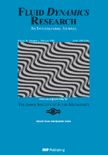
FLUID DYNAMICS RESEARCH
Innovating Research in Fluid Dynamics and BeyondFLUID DYNAMICS RESEARCH, published by IOP Publishing Ltd, is a pivotal journal dedicated to advancing the understanding of fluid dynamics through interdisciplinary research that spans several domains including mechanical engineering and physics. With an ISSN of 0169-5983 and E-ISSN 1873-7005, this journal provides a vital platform for researchers aiming to disseminate new findings and theoretical advancements in fluid flow and transfer processes. As of 2023, FLUID DYNAMICS RESEARCH holds a commendable position within the academic community, ranked Q3 in fluid flow and transfer processes, mechanical engineering, and miscellaneous physics and astronomy categories. The journal showcases a diverse array of articles that not only inspire collaboration among professionals and students but also ensure that theoretical and experimental studies are accessible for further development in the field. Operating from the United Kingdom, the journal offers a unique opportunity for scholars worldwide to contribute to the vibrant community dedicated to understanding the complexities of fluid dynamics, even as it anticipates converging its years of research from 1986 to 2024.